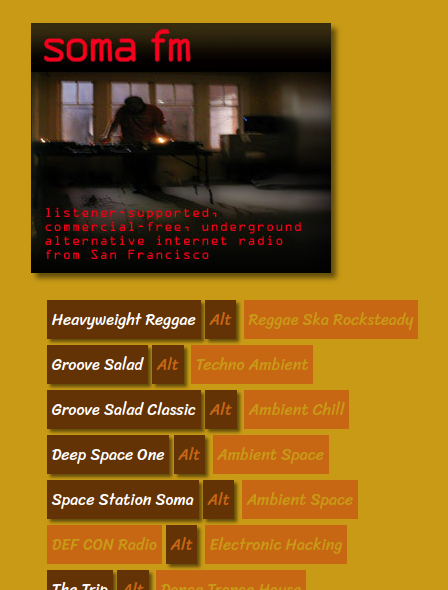VLC Wrapper Script for SFM: flask.Flask(), flask.render_template, csv.reader()
A Python virtual environment helps prevent changes to system Python which would render an OS unstable. For example, if a Python module requires a previous version of a dependency, which system Python also uses, and then changes such an existing dependency to another version, system instability can result. So, a Python virtual environment can help contain Python development within its own sandbox to help prevent it from knocking the swing set over or tilting the merry-go-round. For developers, virtual environments can become a system security measure of sorts.
Below, is an example of virtual environment creation:
user_foo@foo_host:~/Desktop$ python3 -m venv foo
user_foo@foo_host:~/Desktop$ cd foo
user_foo@foo_host:~/Desktop/foo$ ls -l
total 20
drwxrwxr-x 2 user_foo user_foo 4096 Jul 1 10:11 bin
drwxrwxr-x 2 user_foo user_foo 4096 Jul 1 09:30 include
drwxrwxr-x 3 user_foo user_foo 4096 Jul 1 09:30 lib
lrwxrwxrwx 1 user_foo user_foo 3 Jul 1 09:30 lib64 -> lib
-rw-rw-r-- 1 user_foo user_foo 69 Jul 1 10:10 pyvenv.cfg
drwxrwxr-x 3 user_foo user_foo 4096 Jul 1 10:10 share
$ source bin/activate
(foo) user_foo@foo_host:~/Desktop/foo$To run the app, enter the following command line arguments in a Unix-like terminal emulator. source vlc_wrapper_sfm.sh will do the same thing.
$ . vlc_wrapper_sfm.sh#! /bin/dash
export FLASK_ENV=development
export FLASK_APP=vlc_wrapper_sfm
flask run#! /bin/dash starts with a shebang. The space after the shebang is optional.
The shebang is actually a human-readable instance of a magic number in the executable file, the magic byte string being 0x23 0x21, the two-character encoding in ASCII of
#!. This magic number is detected by the exec family of functions, which determine whether a file is a script or an executable binary. The presence of the shebang will result in the execution of the specified executable, usually an interpreter for the script's language.
from flask import Flask
from flask import render_template
from csv import readerflask.Flask()to instantiate theFlaskclassflask.render_template()to render a Jinja2 template for Web page display.csv.reader()to create a CSV reader object to make the database available to Python
APP = Flask(__name__)Instantiates the Flask class for a standalone application that will not be imported into another application.
GENRES_URL = {}The dictionary will contain the SomaFM station name, its genres, its directory name, along with two integers that specify the Icecast server. But there does not seem to be any rhyme or reason for which particular numbers should be applied, just as a station's .pls file may contain a half-dozen IPs. Plenty of Icecast links. No complaints here.
STATION_NAMES = []SomaFM station names will be stored in a list which enables ordered indices. GENRES_URL and STATION_NAMES are generated at the same time while iterating through the csv.reader() object.
@APP.route('/')The decorator modifies the index() method, where the route is set. In this case, the path is the localhost's root.
return render_template('template.html', GENRES_URL=GENRES_URL, STATION_NAMES=STATION_NAMES)The template.html file is stored in the templates/ directory because that is where Flask will look for it.
The web page's template will be rendered by the Jinja template engine.
SomaFM asks for inclusion of a logo if a developer links to their streams. The largest logo link becomes useful as a header.
<p>
<a href="http://somafm.com/">
<img src="http://somafm.com/linktous/300x250sfm.jpg"
alt="SomaFM commercial free internet radio"
border=0
height=250 width=300>
</a>
</p>{% for i in STATION_NAMES %}
<li>{# station name | genres #}
<a href="http://ice{{ GENRES_URL[i][2] }}.somafm.com/{{ GENRES_URL[i][1] }}-128-aac" target="_blank" class="blk1">
{{ i }}
</a>
<a href="http://ice{{ GENRES_URL[i][3] }}.somafm.com/{{ GENRES_URL[i][1] }}-128-aac" target="_blank" class="blk2">
Alt
</a>
<div class="blk3">
{{ GENRES_URL[i][0] }}
</div>
</li>
{% endfor %}Above is an example of a Jinja engine looping structure, from {% for i in STATION_NAMES %} to {% endfor %}. {# station name | genres #} is an example of a comment. Expressions are inserted using handlebar/mustache-style syntax. The link above will end up something like http://ice3.somafm.com/reggae-128-aac.
If the app runs as a standalone, then APP.run() will be executed. See flask run in the shell script above.
if __name__ == '__main__':
APP.run()Bottle microframework differs from Flask microframework in various ways, but they are generally the same.
from csv import reader
from bottle import route
from bottle import SimpleTemplate
from bottle import runbottle.route()class wraps a route callback along with route specific metadata and configuration and applies Plugins on demand.bottle.SimpleTemplate.render()renders the template using keyword arguments as local variables.- SimpleTemplate instance:
TPL = SimpleTemplate(name=f'{PROJ_DIR}/views/template.tpl') return TPL.render(data=DATA, names=NAMES)returns data to thebottle.SimpleTemplate.render()instance.run(host='localhost', port=8080)runs the rendered template for web page display.localhostcan be replaced with127.0.0.1or any typical loopback address.
% for i in names:
...
% endThe basic difference in the template is the syntax for the looping structure.

